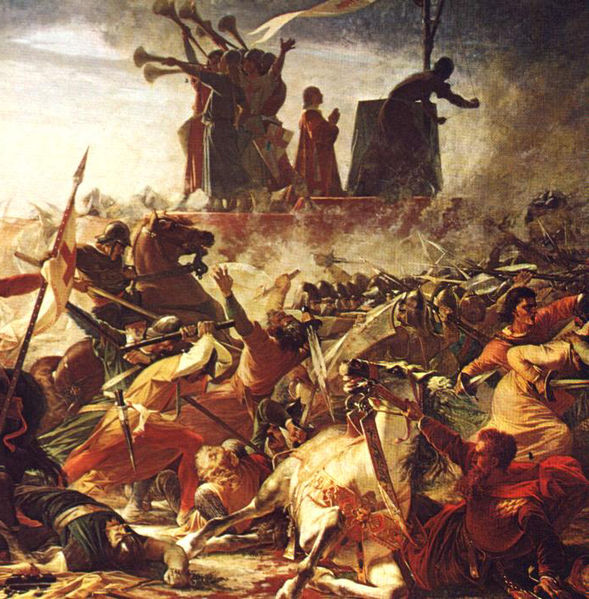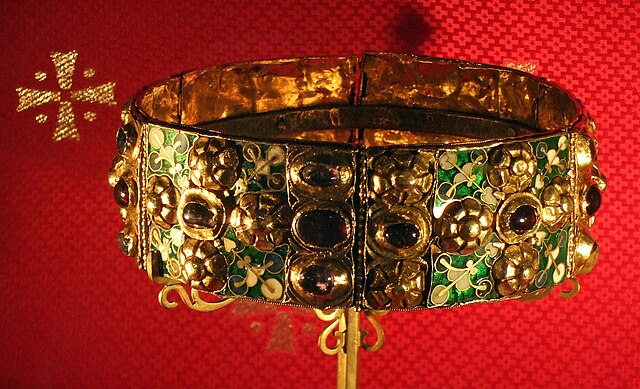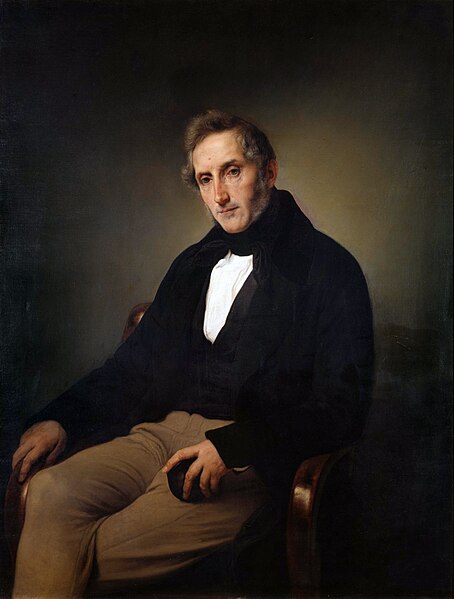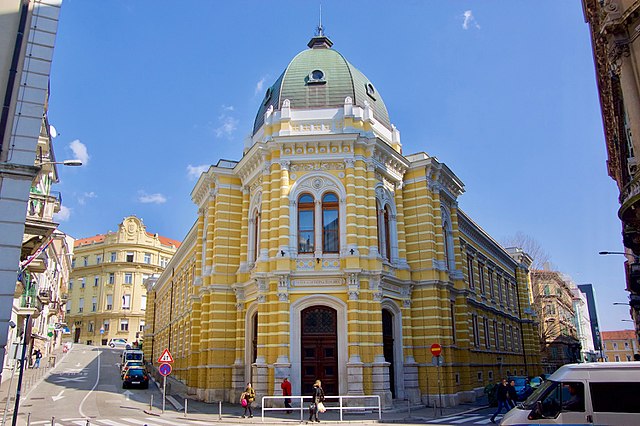Northern Italy is a geographical and cultural region in the northern part of Italy. The Italian National Institute of Statistics defines the region as encompassing the four northwestern regions of Piedmont, Aosta Valley, Liguria and Lombardy in addition to the four northeastern regions of Trentino-Alto Adige, Veneto, Friuli-Venezia Giulia and Emilia-Romagna.
Migration of the Lombards towards northern Italy
The defence of the Carroccio during the battle of Legnano (1176) by Amos Cassioli (1832–1891)
San Michele Maggiore, Pavia, where almost all the kings of Italy were crowned up to Frederick Barbarossa
The Iron Crown of Lombardy, for centuries a symbol of the Kings of Italy
Italian is a Romance language of the Indo-European language family that evolved from the Vulgar Latin of the Roman Empire. Italian is the least divergent Romance language from Latin, together with Sardinian. Spoken by about 85 million people including 67 million native speakers (2024), Italian is an official language in Italy, San Marino, and Switzerland, and is the primary language of Vatican City. It has official minority status in Croatia and in some areas of Slovenian Istria.
Dante Alighieri (top) and Petrarca (bottom) were influential in establishing their Tuscan dialect as the most prominent literary language in all of Italy in the Late Middle Ages.
Venetian Pietro Bembo was an influential figure in the development of the Italian language from the Tuscan dialect, as a literary medium, codifying the language for standard modern usage.
Alessandro Manzoni set the basis for the modern Italian language and helping create linguistic unity throughout Italy.
Italian Secondary School in Rijeka/Fiume, Croatia








